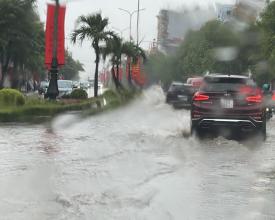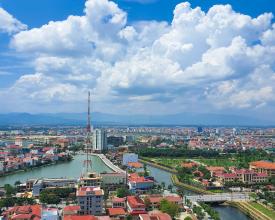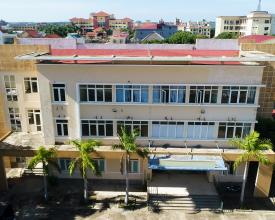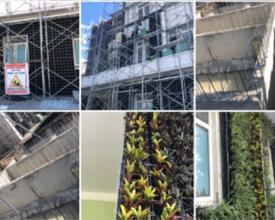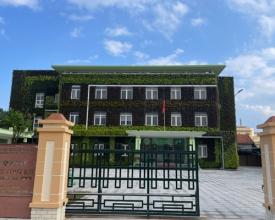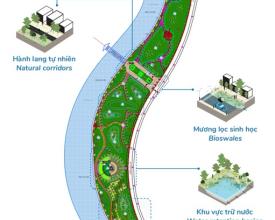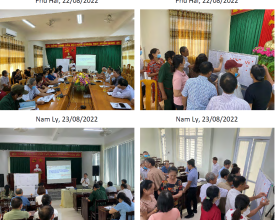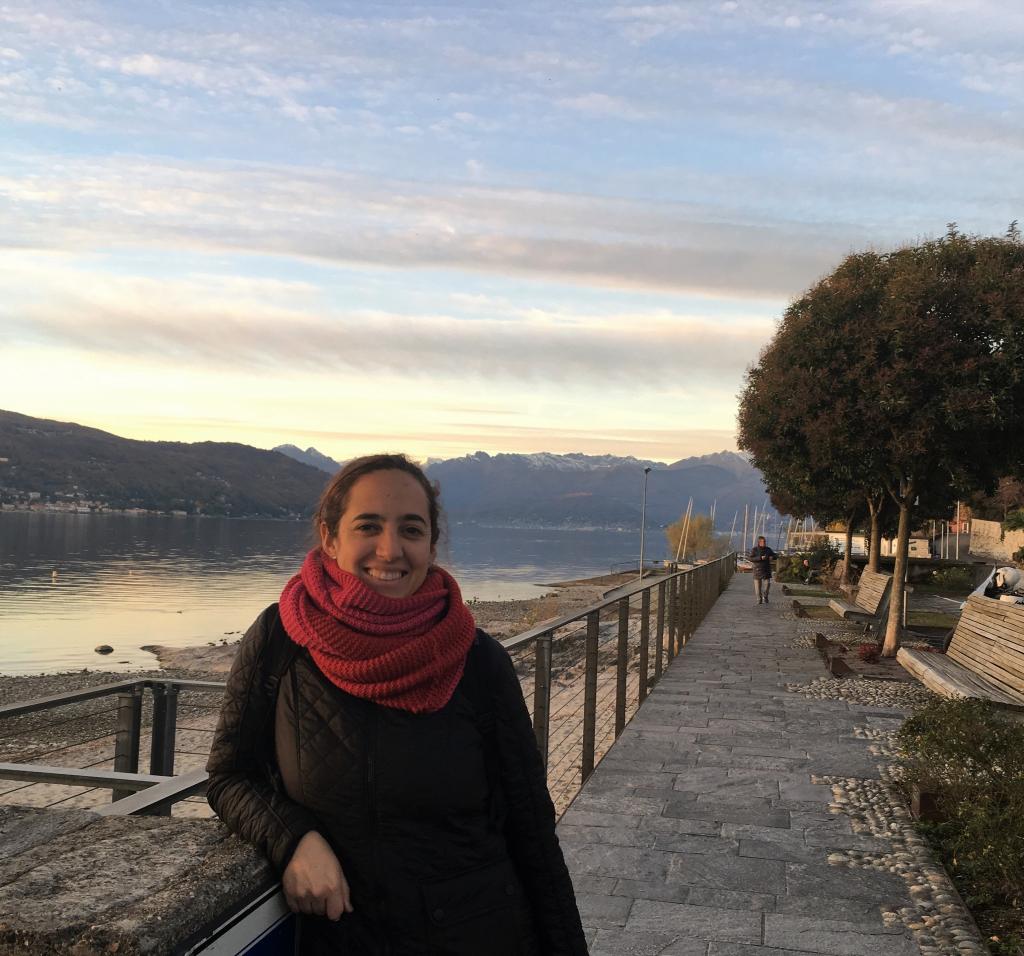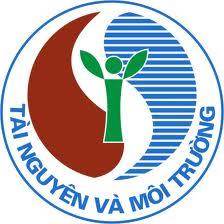
Urban Ecosystem-based Adaptation to Enhance Urban Flood Management and Resilience of Dong Hoi City in Central Viet Nam
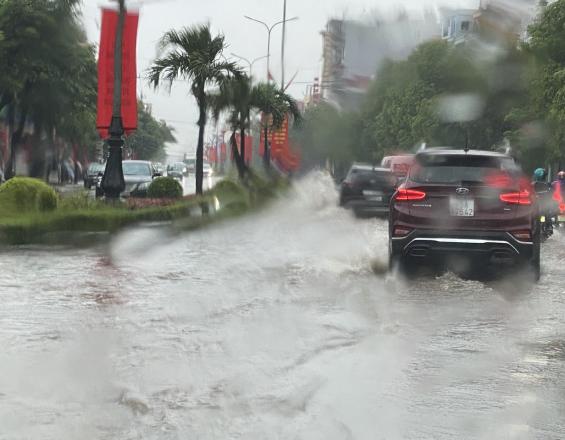
Located along Viet Nam's coastal line, Dong Hoi city is highly vulnerable to climate change impacts such as storms, floods and droughts, causing substantial damage to the infrastructure, production and people over the last few years. Dong Hoi's urban ecosystems are particularly vulnerable to climate change due to fast growing urban population, urbanization pressures and complex patterns of economic assets, infrastructure and services. The development and implementation of three pilot urban EbA measures, namely water retention areas, green walls and roofs as well as sustainable urban drainage systems (SUDS), contribute to the transformation in urban development to enhance its adaptive capacity and reduce climate change impacts. These measures serve to showcase the possibilities of green interventions in helping the city to cope with increasing temperature, flood management, energy efficiency and reducing GHG emissions, while enhancing ecological services, biodiversity and noise cancellation.
Contexto
Défis à relever
Environmental: The most pressing climate hazards faced by the city are flooding, sea erosion, typhoons and heat stress. At the same time, the negative impacts of fast urbanisation and high rate of land occupation have caused a low rate of rainwater infiltration because of sealed surfaces, for example concrete road surface and pavements, leading to local inundation and degradation of urban ecosystems.
Social and economic: The serious impacts of floods and storms have resulted in substantial damages to the infrastructure, production and people over the last decades. It leads to high investment from the public and the private sector for the re-construction of the city's facilities. The increase in hot days, heat stress and flood have caused a lot of health problems for local people. Moreover, the limited awareness of local authorities and communities about urban EbA leads to ineffective solutions in urban planning.
Ubicación
Procesar
Summary of the process
In the efforts to support Dong Hoi city to enhance its resilience and showcase the sustainable impacts of EbA approach to urban climate change challenges, the pilot urban EbA measures were developed and implemented by GIZ/VN-SIPA project (Support Viet Nam for the Implementation of the Paris Agreement Project) funded by BMWK through International Climate Initiative (IKI) for the period from 2020-2022. A scoping mission and a preliminary study to identify and select different urban EbA measures to reduce the city's vulnerability and enhance its resilience (building block 1) is a precondition to successfully implement the most impactful and the most feasible EbA measures in Dong Hoi city. Through a participatory process, the following measures were chosen: water retention areas, green walls and roofs, and Sustainable Urban Drainage System (SUDS) (building block 2). At the same time, capacity building and awareness raising about climate change adaptation, urban EbA and climate risk assessments (building block 3) was conducted for relevant stakeholders to strengthen their adaptive capacity and their technical knowledge to apply and integrate the approach into their daily work.
Building Blocks
Scoping Mission and Preliminary Study to Identify and Select Potential Urban EbA Measures in Dong Hoi City
In order to identify the most feasable urban EbA measures with the highest potential to pilot in Dong Hoi city, the first step was to carry out a scoping mission and a preliminary study to collect and analyse data to provide a scientific basis for the consultation process. The objective was to provide a detailed review and analysis of previous studies and information gathered through structured stakeholder engagement via interviews, focus group discussions and stakeholder consultations for a participatory selection of pilot measures with relevant partners.
The scoping mission and the preliminary study were conducted to provide further insight into the specific vulnerabilities and the possible adaptation responses for Dong Hoi city. The findings were used to identify a short list of urban EbA measures as well as any outstanding knowledge gaps and/or information needs for the next steps.
A multi-stakeholder engagement event was held to promote an open dialogue between stakeholders to discuss key issues related to climate impacts and local vulnerabilities. This knowledge exchange among key stakeholders strengthened relationships among key partners, enhanced partners’ understanding of urban EbA measures as well as generated knowledge to fill information and data gaps identified in the preliminary study.
Selection Process
Analysis: The identification, development and assessment of the selected urban EbA measures was based on a functionalistic approach in which the cause and effect of the main hazards compiled during the preliminary assessment and the scoping mission provided the basis for the revision of final measures. These measures, based on the causes of the key problems and their linkages to current and future climate hazards, were meant to take into account short-term and long-term considerations as much as possible.
Selection: The selection criteria were based on the Friends of Ecosystem-based Adaptation (FEBA) Assessment Framework for EbA Quality Standards. It was used in a participatory selection exercise during the second multi-stakeholder event and during consultation with key partners. The use of the framework provided a scientific and transparent selection process, based on an internationally endorsed tool.
The final measures, based on this selection process, was defined as: 1) Cau Rao EbA River Park (water retention areas), 2) Rain Gardens (green wall and green roof) and 3) Water Flow Management (SUDS).
Enabling factors
- Stakeholder consultation and urban EbA measures selection process were conducted with active participation of relevant stakeholders (public and private) from local to provincial levels, aiming at awareness raising on urban EbA concepts, bringing together stakeholder views and perceptions, ensuring local relevance of the selected measures and involvement of stakeholders in the implementation process. Thus it brings a good cooperation, engagement and a learning attitude from local authorities and stakeholders for the topics and their willingness to change, making the urban EbA selection exercise more interesting and practical
- Deep understanding of challenges, needs and expectations of key stakeholders towards climate change adaptation measures for their sector development and provision of useful advice
- Exchange and dialogue between relevant stakeholders and involvement in shared discussions on their roles, mandates and cooperation in their daily work to enhance sector resilience
- Leading role of key stakeholders in selection and decision processes
Lesson learned
- Awareness raising of provincial partners about climate change adaptation and urban EbA through their integration in the process of data collection, focused group discussions, stakeholder consultations and the selection process
- Early involvement of key partners and the private sector into participatory processes to enhance their ownership of the process and the selected urban EbA measures
- Facilitation of communication and cooperation between different government entities and the private sector in the processes to ensure a successful implementation in the next phase
Implementation of Urban EbA Measures in Dong Hoi City
At the stakeholder consultation workshop, three urban EbA measures were identified and selected to pilot in Dong Hoi city, including:
1) The water retention measure aims to address flood risk through water retention and delayed runoff during flooding, and heat stress reduction in the core urban zone of Dong Hoi City. It integrates urban flood risk management, relieves pressure on Cau Rao River as the main floodway protecting the city, improves existing ecosystem health, and increases blue-green space for the city. The measure is designed with multiple urban EbA components, including (1) a water retention area for flood reduction, (2) permeable surfaces (e.g. using native species of grass, vegetation and pavement) for storing water runoff, (3) swales along the existing road to reduce runoff and infiltration of pollutants, (4) additional trees to provide shading and regulate microclimate, (5) a protected area for habitat and to enable scientific investigation.
2) The green wall and green roof measure aims to conserve green spaces in the municipality in the face of increasing pressure to develop the natural lands due to rapid urbanization, contribute to the reduction of surface temperature and heat stress during hot summer months and flood risk mitigation, green-blue components (e.g. trees, vegetation layers...). The measure is designed with facade greening on exterior walls and a rooftop garden replaced the traditional corrugated iron-roof of the building adjacent to a rainwater harvesting system.
3) The Sustainable Urban Drainage System (SUDS) aims to enhance the drainage system through applying a nature-based approach in the construction and operation of the system to improve the flood management in the urban area. It helps to address the problem of local hotspot flooded areas during heavy rainfalls or typhoons in Dong Hoi city. The measure is designed and implemented with following components:
- Two underground storage tanks with storage capacity of 150 m3 with soak-away structure
- Eight inlets to collect rainwater on the road surface around the site
- Perforated uPVC collection pipes that are connected to the existing drainage system with a one-way backflow preventer
- Sidewalk paving slabs replaced by permeable structure
- Green trees to increase water permeability on land surface
The results showcase the effectiveness and possibilities of green interventions in helping the city to cope with increasing temperatures, flood management and energy efficiency while reducing GHG emissions. On top of that, lessons learnt and practical experiences in terms of technical knowledge, methodology and approach were shared, expanded and integrated into provincial technical standards, urban planning and relevant binding documents.
In fact, in order to finalise the urban EbA measures at site after the selection process, there were different steps required according to Viet Nam's legal frameworks and project's procedures:
- Site assessment: Planning an urban EbA measure required a thorough site assessment of the local climatic and geographical conditions to inform the optimum design and installation requirements. A comprehensive site assessment examined climate, hydrology, soil and water conditions on meso- and micro-level and takes into account the existing built environment.
- Planning: At this step, it was important to set an upfront goal of each urban EbA measure as this will influence the design, construction and level of maintenance required for the system. The scale, relationship to other facilities, benefits and impacts to communities and region, problems to be addressed were defined and elaborated. In addition, stakeholder engagement needed to be considered to define relevant involved parties and their roles, specialists, technical designers and service providers. All relevant procedures and regulations were figured out as well.
- Design phase: The crucial step of this phase was to develop a technical design document for the measure. Based on the set goals, site assessment results and requirements, the designers and technical experts prepared the technical drawings and the design report. Aspects related to size, functional components, technology, materials, timeline and cost estimation needed to be included. Consultation process to present the technical design was conducted for comments and feedback from different stakeholders before submitting all files for approval by local authorities. Upon the approval of the technical design document, the process to obtain the construction permit needed to be carried out according to government regulations.
- Implementation: The construction implementer and construction supervision consultants were selected through a bidding process. An implementation plan was worked out and agreed by all relevant stakeholders before construction on the site. Local authorities and project partners took the roles of overall management, monitoring the work progress. Monthly meetings were conducted to update the progress and deal with arising issues during the implementation. The relevant government regulations and standard requirements needed to be complied fully and strictly at this phase. At the end of this phase, the implementation guidelines, lesson learnt and leaflets to promote the results were developed and shared in public for awareness raising and upscaling in the region.
- Engagement of private sector: After participating in all consultation stakeholder and urban EbA measure selection processes, private sector is interested in involvement and application of urban EbA approach in their daily work implementation to enhance their capacity and knowledge in this field. In particular, the Environment and Urban Development Company has together with the project worked out co-implementation plan for SUDS measure due to it is in line with their mandate and professional experiences. Moreover, the company has committed to cover 50% of the cost for implementation of the SUDS measure from their company yearly budget. Besides, upon the completion of the measure, the company currently covers the maintenance cost for the measure.
- Maintenance: Upon the completion of the implementation phase, the urban EbA measures were handed over to provincial partners. A consultation process was conducted to agree upon the roles and responsibilities on management, operation and maintenance of the work by parties who took over. Planning and budget allocation was prepared and committed to on the partner side.
In fact, the three measures are applied the “Delay-Store-Drain” approach of the Living Water Principles1 in improvement of flood management, natural ecosystems in urban areas. These combined hybrid, blue-green elements of the three implemented measures help to enhance the urban landscape while contributing to reducing current climatic risks, with a particular focus on flood risks and heat-stress in the city. Three implemented urban EbA measures are integrated measures which have clear linkage and complimentary solutions in enhancing climate resilience and ecosystem services maintenance of Dong Hoi city. Meanwhile the Water retention area measure contributes to the reduced urban runoff discharge pressure through the creation of open field retention, waterscapes recharging, increasing permeable surfaces and green spaces, vegetation cover on land surface of the city, the Green wall green roof measure presents complimentary options for creating green spaces on the building to reduce heat stress and provide direct cooling to the buildings, increasing water storage and regulating stormwater runoff through rainwater harvesting components. Additionally, the Sustainable urban drainage system contributes to enhance city drainage system for flood management improvements.
During the stakeholder consultation and urban EbA measure selection processes, gender approach is always considered through engagement of at least 50% women participants in all events and discussion and all their inputs are recognized and integrated into the final results.
Enabling factors
- Close cooperation, support of local governments and stakeholders in the implementation of urban EbA measures and their commitment in combating global climate change and promoting sustainable development
- Capacity building and awareness raising activities help provincial stakeholders obtaining good understanding and knowledge on the importance and benefits of urban EbA approach in enhancing ecological services, biodiversity and climate change adaptation, and promoting their engagement in implementation of the pilot measures.
- High commitment, engagement and contribution from the private sectors to invest in adaptation measures, enabling the great success of the project
- Integration of EbA approach into urban planning processes as well as relevant policies, ensuring the sustainability of the interventions
Lesson learned
- Lack of technical standards and regulations necessary to implement the urban EbA measures it takes longer time to explain and capacity building for provincial partners in the process of implementation approval at provincial level.
- Various unforeseen requirements and procedures by local government during the implementation and handing over
- Lack of a comprehensive database of technologies, products, and local manufacturers for the input materials (e.g Green wall green roof measure) caused the challenges for the preparation of designing and planning document to submit for approval at provincial level.
- Local authorities needed more time to revise current technical standards as the approaches were quite new.
- Tangible benefits of urban EbA measures could only be seen after a relatively long period of time. However, local leaders needed to prove the results in their planning and report cycle. Therefore, public investment for EbA measures in provincial planning is still limited.
- Facilitating the participation and involvement of private sector at very early phase of consultation, awareness raising, selection of urban EbA measure and designing phase that promote their engagement and contribution in the process of implementation of the measure
Capacity Building on Urban EbA and Climate Risk Management for Provincial Partners and Local Communities
An adaptive capacity assessment was conducted with key institutions and communities who participated in the implementation of the final urban EbA measures, through face-to-face interviews and group discussions. It is important to note that there was a general acceptance of the need to respond to climate change in the long term and the importance of using climate information to inform decision-making. However, the Dong Hoi-specific, contextualised understanding about long-term climate risk management and adaptation planning is less clear. The focus of development planning and implementation relies mainly on grey infrastructure interventions while the possibilities of blue and green infrastructure were little known. Furthermore, existing ecosystems which the city provides are not preserved and valued or integrated in a meaningful way when new infrastructure projects are planned. For example, resorts have been built on dunes and promoted as eco-resorts while the dune system was removed for a better view which eventually will lead to flooding and seabank erosion during the typhoon season.
Therefore, along with the implementation of pilot urban EbA measures, a capacity development strategy for relevant stakeholders at different levels was elaborated. Awareness raising and technical trainings for provincial leaders and technical staff which are responsible for planning and approval processes in the city were core activities. The focus of these capacity building activities was, on the one hand, the general knowledge on urban adaptation, urban EbA and climate change risk and, on the other hand, on green/blue/grey adaptation options with an emphasis on the meaningful consideration of existing ecosystems in planning and approval procedures. In addition, relevant awareness raising activities on urban EbA was also initiated and conducted for urban communities of Dong Hoi city.
In six different stakeholder workshops, nearly 200 provincial and municipal leaders, technical and private sector staff who are responsible for decision making and urban planning have improved their knowledge and understanding on urban adaptation, urban EbA and climate risk management. They were also involved in the urban EbA study which helped them to learn about the process of identifying potential benefits of EbA measures as well as gaps and challenges caused by climate change impacts in the city.
Two technical training courses on urban EbA and climate risk assessment tools were carried out for about 80 provincial and district technical staff who are responsible for development planning at different levels. The participants were equipped with technical knowledge and tools which they could apply in their daily work to assess climate risks and potential EbA measures to enhance resilience and ecosystem services in the planning processes.
Ten awareness raising events were conducted for about 600 local people of ten urban communities in Dong Hoi city to provide basic knowledge on climate change impacts, climate change adaptation and urban EbA. The events created interesting opportunities for local people to discuss, exchange and brainstorm on their challenges and difficulties caused by climate change impacts and agree upon feasible adaptation measures at community level. Most of them confirmed that this was very interesting and helpful for their areas.
As a result of the activity, relevant training material was developed and published. Moreover, urban EbA was integrated into the Provincial Climate Change Respond Action Plan of Quang Binh province.
Enabling factors
- Learning attitude and an open mind from local stakeholders for new technical topics on urban EbA and climate risk assessment
- Commitment by provincial partners to apply urban EbA in their daily work
- Diversified and targeted awareness raising with appropriate methodologies, promoting engagement and participation of different stakeholders
- Provision of technical knowledge and tools along with creating opportunities for participants to exchange, brainstorm and develop an action plan together
- Involvement and ownership of the process by local stakeholders
Lesson learned
- EbA and climate risk assessment are complex and integrated concepts.
- Sector-based training on climate adaptation, EbA was proposed to further support different sectors.
- Tailor-made awareness raising was designed for communities, however, the climate risk assessment seems to be difficult for this target group. It was recommended that the training content should be transferred into more daily-life case studies and stories.
- Create space for local people to discuss challenges and solutions in relation to climate change. It helps to strengthen community solidarity and adaptive capacity.
Impacts
The water retention areas cover an area of approximately 49,000m2 - the so-called Cau Rao River Park. It was designed and constructed with multiple urban EbA components. The green and green roof measure was developed and integrated into a 3-floor-building, comprising facade greening, a green roof and a rainwater collection system to maintain green spaces in urban areas. The Sustainable Urban Drainage System (SUDS) was constructed on an area of 353m2 and includes a basin of 14,500m2. It is an effective approach to manage flood risk of the city.
Environmental: The measures aim to address climate change impacts and enhance resilience and flood risk management through enhancing water retention capacity, reducing heat stress in the core urban zone of Dong Hoi city, improving the health of existing ecosystems, increasing blue-green spaces for the city and promoting biodiversity and green infrastructure in the city.
Social and economic: The measures save energy, clean the air, improve the micro-climate regulation and reduce GHG emissions. Awareness on urban EbA of local authorities and communities was significantly strengthened during the implementation of the pilot measures. The urban EbA approach helps to save 2/3 investment cost for implementation compared to initial planned implementation cost by the Government.
Beneficiaries
More than 31,000 habitants benefit from reducing urban flooding, improving their health through cleaner air, outdoor activities and stress release in the core quarters of the city. In addition, local communities and provincial authorities have strengthened the
Sustainable Development Goals
Story

One of the key business sectors of the Quang Binh Urban Development and Environment Company is the management, maintenance and operation of urban drainage systems and reservoirs, canals and tidal sluice systems in Dong Hoi city. In the context of increasing climate change impacts, the company is facing a lot of challenges in their work because of the fast urbanisation processes and high rate of land occupation, leading to the decrease of wetlands, degradation of natural ecosystems and the low rate of rainwater infiltration because of sealed surfaces. In addition, the degradation of 30-year-old urban drainage systems which have a far lower drainage capacity compared to the high volume of rainwater in rainy season and sea level rise make the urban inundation increasingly serious in recent years. In order to tackle the problem, we looked for sustainable and nature-based urban drainage solutions to improve the drainage system of the city which helps to reduce investment costs and manage flooding more effectively.
In cooperation with the IKI-funded VN-SIPA project, our leaders’ and technical staff’s awareness and technical capacity on urban EbA and nature-based solutions in enhancing urban resilience have been strengthened through trainings, workshops and dialogues. We took part in the preliminary study to identify and select potential urban EbA measures. Together with the experts, we were able to figure out vulnerabilities, gaps and challenges as well as elaborate a plan for urban flood risk management of the city. We decided to take the initiative to be a pioneer company to invest in the urban EbA measure of a sustainable urban drainage system (SUDS) in Dong Hoi city through signing a co-financing agreement (called IDPP). With the project’s technical advice, our company successfully implemented the pilot SUDS to solve the inundation problem at the site with more than 2,000 local people benefitting from it. We’d like to showcase the benefits and effectiveness of the measure in flood risk management as well as the role of the private sector in urban EbA. Importantly, we integrated the technical knowledge we gained and the technology we got to know in our daily work and contributed to the integration of the approach into the urban infrastructure development plan and other relevant development policies of the city.
Mr. Pham Duc Thai – Director of Quang Binh URENCO, Viet Nam
